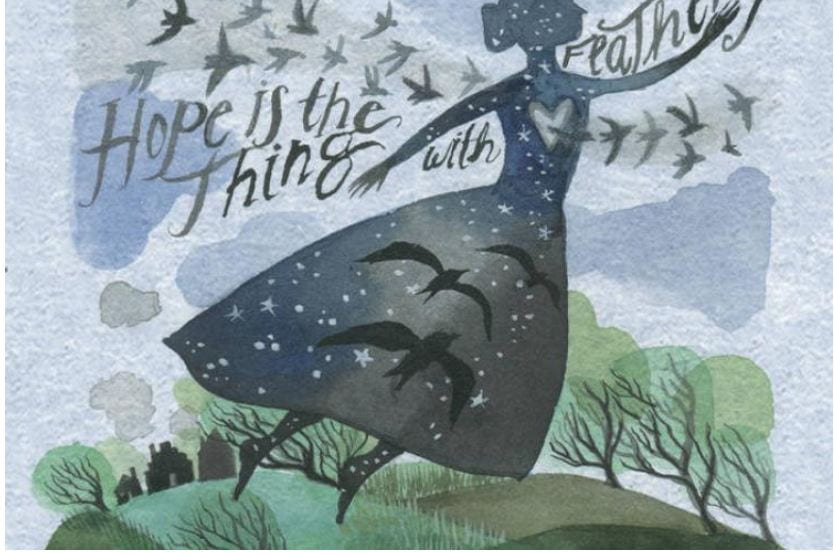Link to New Day’s Lyric:
https://www.dailygood.org/story/2867/-new-day-s-lyric-amanda-gorman
Link to “Hope” is the thing with feathers:
https://www.poetryfoundation.org/poems/42889/hope-is-the-thing-with-feathers-314
Amanda Gorman’s poem “New Day’s Lyric” focuses on the ability to overcome adversity and keep hope throughout. This poem begins with a stanza that uses wordplay to convey the efforts of fixing what is broken in our society. Phrases like, “mourning, we come to mend,” and, “torn, we come to tend,” showcase the juxtaposition in our society and her goals for the future. She uses what society is currently facing, like the fact that we are mourning and torn after COVID-19 and everything else that happened in 2020 and 2021, and shares that she wishes we mend and tend in 2022 as it is a new opportunity for us.
In the second stanza, she states how these struggles are normalized but how she wants to move on to different times. She asks that, when things return to more normal life, they don’t return fully to that and instead, “reach toward what is next.” This shows her hopes and goals for the future where the world changes into more accepting and moves on in a way to honor the past but still improve what can be improved.
In the third stanza, Gorman uses wordplay once again to show the balance between what is and what could be. She says that she wants, “our hearts, once all together beaten,/Now all together beat.” This is saying that we can embrace the struggle of the past and use it to propel us to the future.
In the last stanza, Gorman talks about how this hope will push us and impact us as a society. She says that we are holding the spirit of growth, “In a new day’s lyric,/In our hearts, we hear it.” This is saying that we all have it in us to change and to find the good in the future. She knows that, if we want to, we can change and we can push to the better. She ends the poem by saying, “For wherever we come together,/We will forever overcome.” This is Gorman once again emphasizing the strength in numbers concept. She knows that if we put the lyrics and the pressure to change to the test, we can accomplish whatever we want.
This piece has a similar theme to the poem, “‘Hope’ is the thing with feathers,” by Emily Dickinson, a poem written in 1861 and published in 1891. Although Dickinson’s poem is more focused on an individual bird bringing constant hope to her as an individual, it keeps the same mindset of the hope always being there consistently, no matter what has happened. This is evident through Dickinson saying, “And sings the tune without the words – / And never stops – at all.” This shows that the bird is always there to keep people safe and keep them encouraged, much like the lyrics of the New Day in Amanda Gorman’s poem.
Dickinson’s poem concludes with the stanza, “I’ve heard it in the chillest land -/ And on the strangest Sea – / Yet – never – in Extremity, / It asked a crumb – of me.” This is very similar to the piece in Gorman’s where it said that it is in everyone’s hearts. Both of these quotes are basically saying that the hope is something that will never waver because it is in us and we don’t have to work for it, just with it in order to move forward.


